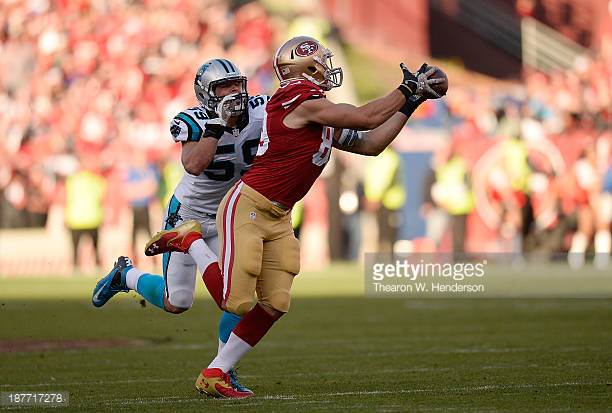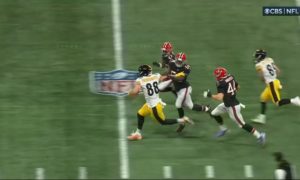There is a pretty obvious reason that the Pittsburgh Steelers felt the need to bring Vance McDonald into their tight end equation, and that is quite simply that he offers things that he brings some qualities to the table that the rest of their group currently on the roster does not.
One of those qualities that he brings that the other tight ends on the roster have not been able to do consistently is present a vertical threat. While he is by no means one of those glorified wide receiver type tight ends, he is more than capable of going down the field, and this is something the Steelers showed obvious interest in last season.
That is, after all, what they signed Ladarius Green to do, and while they did not get nearly the workload out of him that they were hoping for, they did manage to use him as they intended, and I have some numbers that help to illustrate that point.
Referencing my regular season charting notes that I compiled from last season, the numbers are stark. Compare the average depth of target from their tight ends. Jesse James’ average depth of target in 2016 was 6.7 yards. David Johnson’s work was unsurprisingly even closer to the line of scrimmage at 5.7 yards. Xavier Grimble’s you might think would be more long-range, but it was actually shallower than James’ at 6.5 yards.
Green’s? 12.5 yards. And it wasn’t sample size. Grimble saw 22 targets, Johnson 13, James 64. Green saw 35 targets, significantly more than Grimble and Johnson, and more than half of James’, in just six games. While more playing time would likely have lowered the average depth of target, it was still going to be significantly higher.
Of Green’s 35 targets, only three came at or behind the line of scrimmage, with a total of eight within five yards. Another eight for a total of 16 came within 10 yards of the line of scrimmage, meaning that more than half of his targets came at a distance of greater than 10 yards down the field. He was targeted 20 or more yards down the field nine times.
Of Grimble’s 22 targets, only one came beyond 20 yards, and just four at a distance of 15 yards or more. Johnson’s 13 targets saw just one such pass of 15 or more yards, while James’ 64 targets yielded only seven passes thrown 15 or more yards down the field, with one of them 20 or more yards—thrown by Landry Jones.
Compare that to McDonald’s numbers from last season, whose average depth of target was, according to Dave Bryan’s leg work, 9.83 yards, a full three yards deeper than James’. Of his 46 targets, seven came from a distance of 20 or more yards down the field, or 15 percent.
[Note: in case you’re wondering why my number is different from Dave’s it’s because I included the pass distance for the target that was intercepted, which I estimated at about 13 yards beyond the line of scrimmage.]
An additional five for a total of 12 targets came 15 or more yards down the field, accounting for 26 percent of his targets, while nearly 46 percent of his targets came at least 10 yards down the field, just three targets at or behind the line of scrimmage.
The 49ers didn’t even have the quarterbacks to take advantage of McDonald’s skill set to its full capacity, so it’s quite possible that they may even want to use him even more frequently as a deep-intermediate target than he was last year. Either way, he will clearly be an upgrade in this area to James, Johnson, and Grimble, one of whom he will most likely displace.








